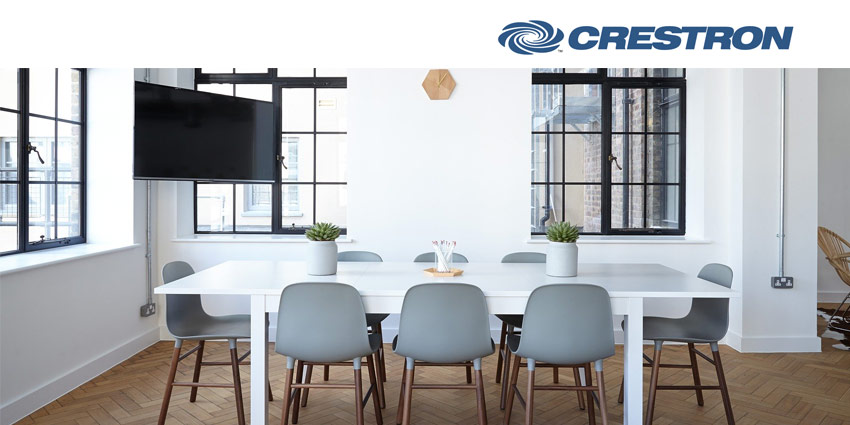Following the recent overnight switch to working from home, forward-looking businesses are now turning their thoughts to what the return to work might look like. As global lockdowns and restrictions on business activity are gradually lifted, we’ll all be adjusting to a world where the virus remains undefeated and untreatable, where we will have to try to conduct ourselves safely and productively meanwhile.
Because long-term working from home is not the solution for everyone, and every business. Some hybrid solution will need to be found. As Charlie James, Business Development Director UC Enterprise EMEA at Crestron, put it, “people are saying, ‘social distancing at work, how’s that going to be done? Can we afford to do it?’ And the answer is yes, because enterprises realise that flexible working works without loss of productivity so the return to work office can be staged or even rotated”.
It’s the office, but not as we know it
To support the social changes, smart technology will make the difference, such as Crestron’s scheduling to provide visual indicators of room occupancy, and their new TSW panels in B and C series kits which are made of antimicrobial materials.
“Or you might use your personal device to bring the meeting in”, suggests Graham Walsh, UC Technical Director, EMEA. Using something like Crestron AirMedia to ensure the only screen you have to touch is your own, is a reassuring option. And voice control, instead of touch — something we’re getting increasingly comfortable with at home while we’re all stuck there, we’ll be bringing back into the office with us.
“We’ve been speaking with Microsoft”, Walsh continued, “and they’re working to put Cortana into Microsoft Teams, voice skills are very much on their radar”
Combined with sensor technology to automate environmental controls — the kind of feature that is already available now but frequently fails budgetary tests, that will surely be re-prioritised as essential.
Hygienic huddles
The way we use physical space will need to be flexible too — but Crestron can draw on its heritage of providing smart technology in homes and enterprises, environments which are highly demanding of discreet, functional, and effective solutions.
It might be a case of adapting larger meeting rooms into socially-distancing huddle spaces for lower numbers, for example, where something like Crestron C-Series would allow for integration of custom audio/video solutions to maintain native Teams use, while enhancing audio and permitting video switching for participants sitting much further apart than the space was designed for.
While ‘official’ advice on how to maintain safe interactions at work remains woolly, businesses are going to have to find practical solutions to effectively exercise their duty of care toward returning team members, while helping them overcome growing fears about coming out of lockdown and going outside at all. Providing clean, consciously-spaced and data-driven environments will surely be part of that — such as heat maps in larger buildings to show occupancy, and let people make their own choices about where to go.
Phased transition
As James reminded us, we’re talking about a period of months or possibly years, where additional risk will have to be accommodated in every interaction. But what happens after that? He mused:
“Will this time be a catalyst for massive permanent change?”
Once everyone has proved they can work from home, under challenging circumstances, the reopening of the workplace must surely signify a more flexible future, with a range of options that include smart-tech enabled co-working centres, as well as third spaces like coffee shops.
Keeping a flexible roadmap which can respond to shifts in customer need, as well as continual dialogue with the innovations being explored by their technology partners, will enable Crestron to support their customers with whatever our rapidly-changing world of work demands — wherever it takes place.







